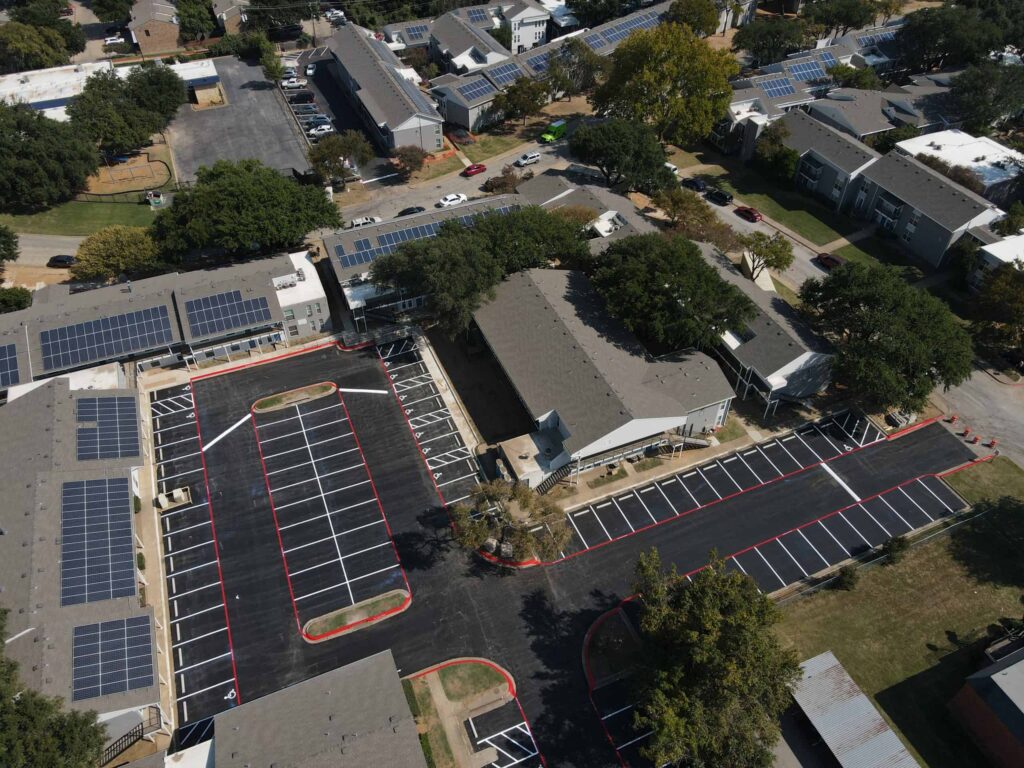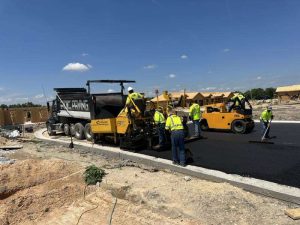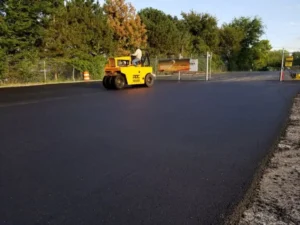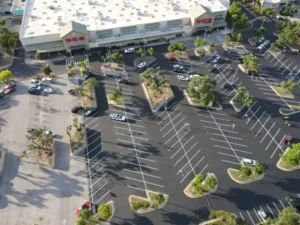
What Causes Asphalt Sealcoating Disbonding?
To sealcoating contractors, disbonding means that the sealant lost its bond with the pavement, or perhaps it was never able to establish a sufficient bond. Common causes of disbonding are listed below.
- Pavement Contamination: Experienced asphalt maintenance contractors should know that contaminants on a pavement’s surface will interfere with the bond. Dirt, grass clippings, trash, loose gravel, and other debris must be removed prior to sealing the pavement.
- Failure to Apply a Primer: Oil and other petrochemicals will prevent bonding from occurring, but they cannot always be completely eradicated, so contractors typically prime them before sealcoating Austin TX pavements. Primer may also be needed if the pavement is severely oxidized, or if it has experienced aggregate polishing.
- Weather: Parking lot maintenance Austin TX contractors know that they must pay close attention to the weather. Sealants need time to cure if they are to form a strong bond. If the temperature falls below freezing before the sealant is sufficiently cured, bonding may not occur.
What Causes Sealcoating to Peel, Crack, or Flake?
Peeling is usually due to disbonding that was caused by a lack of primer, freezing temperatures during the curing process, or pavement contamination. Cracking and flaking can have several causes. The parking lot maintenance Austin TX contractor might have applied the sealant too thickly, or the weather was unsuitable for asphalt sealing. Another possible cause is that vehicles were given access to the pavement before the sealant had time to cure properly. Cracking can also occur if a new pavement is sealed prematurely; fresh asphalt needs time to exhaust its excess oils before sealing. Sealcoating asphalt too frequently can also cause the sealant to peel or crack; few pavements need to be sealed more often than every two years.
What Causes the Tracking of Sealcoating?
Tracking means that the sealant sticks to tires and shoes, resulting in it being carried indoors or onto other pavements. Tracking can have several possible causes.
- If the asphalt sealcoating was applied too thickly, curing may take an excessively long time or fail to occur.
- Tracking can occur if the sealant was applied while weather conditions were unsuitable.
- If the pavement was opened before the sealant cured, tracking is virtually inevitable. Therefore, be sure to wait the recommended time. Parking lot sealcoating in Austin TX often needs over 12 hours to cure sufficiently, but waiting longer is typically better.
- Tracking can potentially occur if the contractor prepared the sealant mix incorrectly. Every sealant manufacturer specifies a recipe for each type of sealant they produce. The quantities of sealant, water, and sand must be precise to ensure proper bonding and curing.
If you require assistance for our paving services, contact RDC Paving. We serve many towns in Central Texas, including Austin, San Marcos, Round Rock, Killeen, Pflugerville, Leander, Georgetown, and Cedar Park. In addition to asphalt sealcoating, we offer asphalt repairs, asphalt overlays and paving, concrete repairs, asphalt crack repairs, parking lot striping, concrete curbing, and driveway paving. We have earned an exceptional reputation by consistently providing extraordinary service and exemplary craftsmanship at competitive prices. Submit our online form if you are interested in receiving a free quote, or you can call 512-920-9155.
